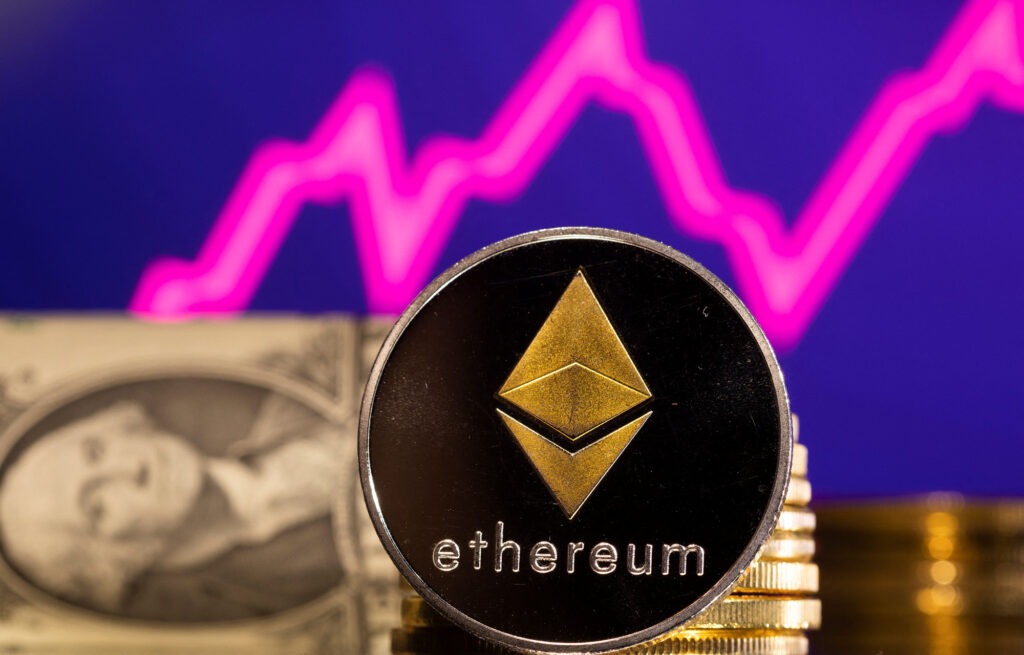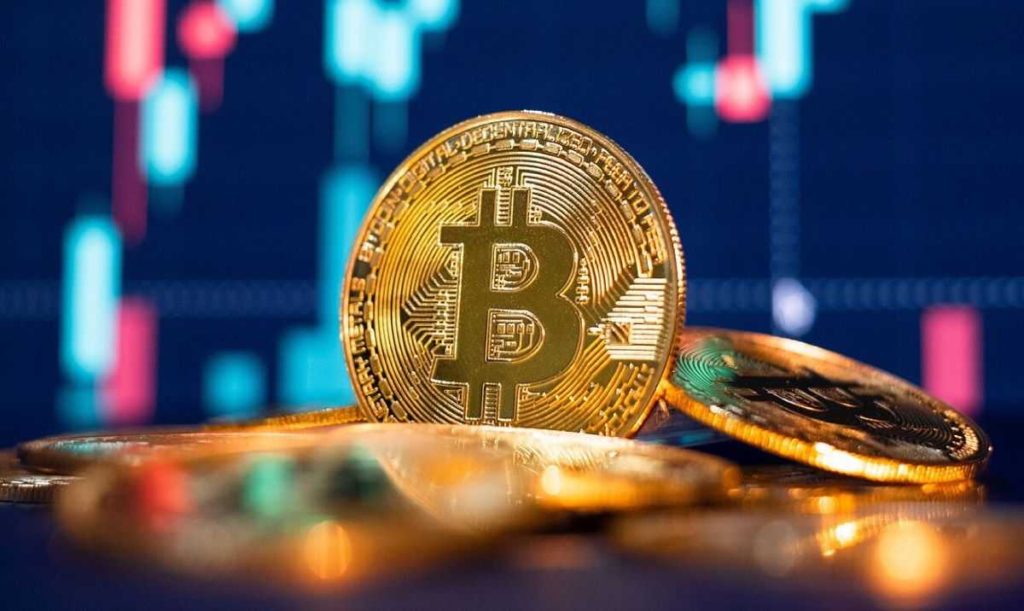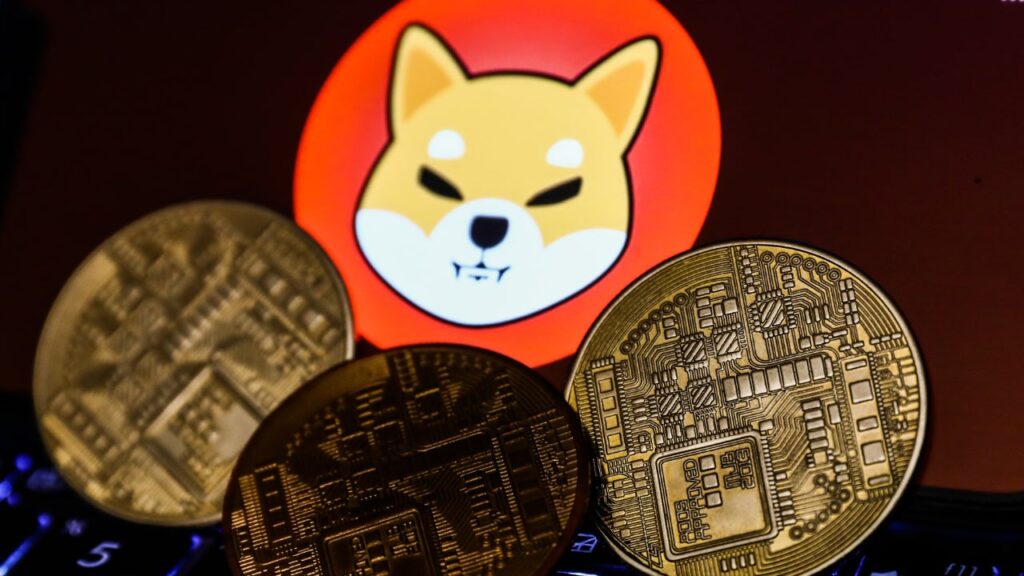BetFury is an ecosystem of crypto products for entertainment and additional income. The platform has a native BFG token with many utilities and offers over 8 000 Slots and In-house games with one of the highest RTPs on the market (up to 99.02% RTP). BetFury also has 80+ kinds of Sports to bet on for true fans.
BFG token is listed on top crypto exchanges: PancakeSwap, Biswap, etc. The token has over 55 000 holders, and more than 3 billion BFG are in circulation. The most profitable utility for using tokens is BetFury Staking, with up to 50% APY and the ability to withdraw Staking payouts daily.
The List of BetFury Bonuses
BetFury has created a unique bonus system for beginners and experienced players in over three years on the market. Depending on the Rank, which ranges from 1 to 20, the user receives a percentage of income from bonuses, which complements the overall benefit.
- Welcome Pack: Sign up to get up to 1 000 Free Spins and $3 500
- Cashback: Return up to 25% crypto from your bets.
- Rakeback: Receive up to 10% of each bet from the Rank 3 and above.
- FuryCharge: Get up to the 2x bonus having a total wager of $1 000 spread over a week.
- Fury Wheel: Spin a free wheel of fortune where you can win crypto up to 1 BTC.
- Bonus Cabinet Offers: Open thematic packs in your Bonus Cabinet for some Deposit Bonuses and Free Spins.
- VIP Bonuses: Every user from Rank 10 receives an invitation to the VIP Club. It’s an elite community where all members get a personal VIP Manager, Bounty Bonuses, VIP Welcome Bonuses, etc.
- 100 Free Spins no Deposit
- Promo codes: Get Free Crypto, Deposit Bonuses, Free Spins, and Free Bets by entering different Promo Codes. They can be obtained on the website, BetFury social networks, and even here in this article!
The first 10 people to activate the FURY promo code on BetFury by September 25 with a $300 wager will receive 100 FREE SPINS.
How to Use the Promo code?
- Create the BetFury account.
- Enter the Promo code on this page.
- Ensure the Promo code is valid, and all conditions are met.
- Enjoy the profitable crypto reward.
Holy Grail of BetFury Gambling
With the advent of so many crypto casinos, it can be difficult to choose one. What sets BetFury apart from others is a combination of carefully developed factors to ensure a secure, private, very entertaining, and rewarding gambling experience.
- Transparency: Each bet is random, thanks to the SHA256 algorithm. You can use the unique Fairness tool to check the platform’s honesty.
- Diverse Cryptocurrency Support: In addition to Bitcoin, BetFury covers over 50 different cryptocurrencies, including ETH, TRX, BNB, USDT, etc. This extensive support increases flexibility for users.
- Security and Privacy: The platform uses top-level security and privacy protocols, including 2FA, in collaboration with well-known security providers such as Gambling Therapy and GamCare.
- Efficient Transactions: BetFury transactions are cost-effective, charging a fraction of traditional banking fees, and executed quickly. Most of them are processed within half an hour.
- Generous Rewards: Besides bonuses and Promo codes, you can grab crypto in chats, catch the flying raccoon Mr. Fury for BFG tokens, and use the simple Referral Program.
- Responsive Customer Support: BetFury customer support is available 24/7 to meet user needs.
- Solid Reputation and Licensing: As a respected crypto casino in the crypto gambling community, BetFury is licensed by the Curacao Gaming Authority. His active presence on social networks further strengthens his authority and guarantees safety.
In conclusion, the BetFury ecosystem combines the crypto and casino realms. Many bonuses, Promo codes, and other profitable activities indicate an interest in attracting a huge and friendly audience. If you become a part of the platform, you will also grow greatly as a player and crypto investor.
Several Ethereum liquid staking providers are taking steps to uphold decentralization by imposing a self-imposed cap of 22% on their share of the Ethereum staking market.
This strategic move aims to prevent any single entity from gaining too much control over the network.
Among the providers embracing or considering this self-limitation approach are Rocket Pool, StakeWise, Stader Labs, Diva Staking, and Puffer Finance.
Ethereum core developer Superphiz reported these commitments. Puffer Finance, a liquid staking service, also declared its dedication to the self-imposed cap.
Notably, Rocket Pool, StakeWise, Stader Labs, and Diva Staking are actively engaged in committing to this limitation.
The motivation behind setting the cap at 22% is linked to Ethereum’s consensus mechanism, which requires 66% agreement among validators to establish the state of the network.
By capping at 22%, the goal is to ensure that at least four significant entities must conspire in order to influence the finalization of transactions on the blockchain.
Finality signifies the point at which transactions become unalterable within a block.
Superphiz introduced this concept in May 2022, raising questions about whether staking pools would prioritize the network’s well-being over their profits.
Notably, Lido Finance, the largest Ethereum liquid staking provider, did not align with the proposal, voting with a 99.81% majority against self-imposed limitations in June.
Lido Finance currently dominates the Ethereum staking market, controlling 32.4% of staked Ether, in contrast to Coinbase, which holds only an 8.7% market share.
Data from Dune Analytics illustrates the distribution of Ethereum stakers by staking amount and market share, with Lido being the sole entity above the 22% threshold.
READ MORE: BlockFi Advances Fund Recovery Efforts with Court Application
Industry commentators have offered differing perspectives. Some, like “Mippo,” argue that the self-limitation proposal doesn’t concern Ethereum’s alignment principle.
Mippo claims that those pushing for this proposal wouldn’t adopt the same stance if they were in Lido’s position. In their view, these actions reflect rational economic decisions based on market dynamics.
Another observer urges the Ethereum community not to label more user-friendly solutions as greedy products.
Yet, some express apprehensions about potential centralization risks, criticizing Lido’s substantial market share dominance as “disgusting and selfish.”
In summary, multiple Ethereum liquid staking providers are embracing or considering a self-imposed cap of 22% on their Ethereum staking market share.
This initiative aims to maintain decentralization and prevent any single entity from gaining excessive control over the network.
The rationale behind the 22% cap is tied to Ethereum’s consensus mechanism, which necessitates agreement among validators for network state confirmation.
While some observers view these actions as economically rational, others express concerns about centralization and dominance within the market.
Other Stories:
What’s New in Crypto Staking This Year
Bitcoin Holds Strong Above $27,000 as Traders Maintain Bullish Outlook
South Korean Parliamentary Subcommittee Rejects Expulsion Motion Over Cryptocurrency Controversy
In 2023, Pepe (PEPE), a prominent memecoin, faced a significant setback as its anonymous creators abruptly sold nearly $16 million worth of tokens on August 24, resulting in a partial rug pull.
The incident prompted a drop of up to 26% in Pepe’s value, causing confusion and concern among cryptocurrency investors and memecoin enthusiasts.
The official Pepe X (formerly known as Twitter) account attributed the decline to three former team members who sold tokens without authorization, exacerbating the token’s already volatile nature.
Despite the turmoil, opinions on Pepe’s future diverged. Reetika Trades, a crypto trader, suggested that the impact of the developers’ departure might be limited due to Pepe’s lack of utility and inherent value.
The sudden sell-off potentially reduced the risk of future coin dumps, which could bode well for the token’s long-term health.
However, the extreme volatility of memecoins, coupled with their speculative nature, underlines the risk inherent in such investments.
Horse, an anonymous trader, emphasized the benefits of removing remaining token supply from the hands of the selling developers.
Drawing parallels to Dogecoin, Horse expressed optimism about Pepe’s potential resurgence and comeback.
Kaiko, a crypto data provider, noted that despite the sudden price crash, Pepe’s liquidity held up surprisingly well, suggesting that the project’s abandonment might not be as dire as initially presumed.
Contrasting viewpoints emerged as Santiment analysts predicted increased volatility for Pepe despite its surge in popularity post-rug pull.
READ MORE: Grayscale Bitcoin Trust’s Negative Price ‘Discount’ Expected to Reverse by 2024
In contrast, prominent trader Kaleo took a more pessimistic stance, expressing a desire for Pepe to collapse entirely.
Following the turmoil, an anonymous team introduced a new spin-off of the original Pepe token, highlighting its alignment with the principles of decentralized finance (DeFi).
The team described the new PEPE token as a truer representation of what the initial Pepe token should have been, characterized by decentralization, community involvement, absence of team tokens, and deflationary mechanisms.
In summary, the eventful saga of Pepe’s rug pull in 2023 underscored the inherent risks and volatility associated with memecoins.
While opinions on Pepe’s future varied, the incident prompted the emergence of a new token striving to embody the ideals of decentralized finance.
The broader memecoin ecosystem continues to be a space marked by excitement, speculation, and uncertainty.
Other Stories:
Digital Currency Group Reaches Agreement with Genesis Creditors for Potential Recovery
dYdX Unlocks $14.02 Million in DYDK Tokens for Community and Trader Rewards
Federal Judge Overturns SEC’s Denial of Grayscale’s Bitcoin ETF
The upcoming Bitcoin halving event, anticipated in less than nine months, has sparked a prevailing belief among analysts and investors that Bitcoin’s value will soar to new heights, potentially exceeding $100,000.
However, the prevailing macroeconomic challenges, the absence of fresh investments into the crypto market, and Bitcoin’s recent price performance, dipping below $30,000, cast doubt on this optimistic projection in the immediate future.
Sue Ennis, the Vice President of Hut 8, shared her insights on the matter during a recent interview with Paul Barron.
Ennis discussed how Bitcoin’s value could breach the $100,000 mark in the coming year and how the halving might impact Bitcoin miners.
Hut 8 presently holds a reserve of 9,152 BTC, with 8,305 unencumbered. The company boasts an installed ASIC hash rate capacity of 2.6 exahashes per second and mined 44.6 BTC in July.
The discussion revolved around whether the increasing complexity of Bitcoin mining could prompt miners to flood the market with Bitcoin.
Notably, Hashrate Index data revealed that surges in mining complexity were often succeeded by drops in Bitcoin’s value.
The interview raised questions about whether miners were selling off Bitcoin due to the impending halving, necessitating more efficient ASICs.
Ennis suggested that the pre- and post-halving price action of BTC might not align with investors’ bullish expectations.
Ennis highlighted unique dynamics within the mining sector, noting that hash rates continued to rise despite Bitcoin’s trading within a particular range. This trend defied conventional wisdom.
READ MORE: Casino Gender: Which Games Do Men and Women Prefer?
She underscored the emergence of new participants in the global Bitcoin network, driven by substantial energy generation, particularly nuclear and renewable, in the Middle East. Unlike US-based miners, these newcomers demonstrated price-agnostic behavior.
To endure the halving’s impact, Ennis proposed diversifying revenue streams for miners.
Beyond Bitcoin mining, miners could explore artificial intelligence applications, allocate warehouse space for GPU-focused AI training firms, offer industrial-level ASIC repair services, or participate in energy initiatives.
Ennis also discussed the potential impact of a spot Bitcoin exchange-traded fund (ETF) launch.
While investors have long anticipated this, regulatory approval has remained elusive.
Ennis believed a spot ETF’s approval would benefit the asset class, yet cautioned that miner equities might face sell pressure as they often functioned as proxy investments for Bitcoin.
Ennis projected a positive outlook for Bitcoin, suggesting a potential price target of $100,000.
She based this on Bitcoin capturing even a small portion of gold’s $13 trillion institutional portfolio, potentially pushing Bitcoin’s price northward.
Notably, the involvement of financial giant BlackRock signaled increased credibility to this outlook.
In summation, as the next Bitcoin halving approaches, predictions of a price surge above $100,000 dominate discussions.
However, economic challenges and recent price trends cast doubt on these predictions, making the future of Bitcoin’s value uncertain in the short term.
Other Stories:
Former FTX CEO Sam Bankman-Fried’s Legal Team Deems Trial Preparations Inadequate
Three Former Team Members Accused of $16 Million Theft from Pepecoin (PEPE) Multisig Wallet
Hashdex Challenges Status Quo with Innovative Approach in Pursuit of Bitcoin ETF Approval
Indian Prime Minister Narendra Modi has emphasized the need for worldwide cooperation in shaping regulations for cryptocurrencies during the annual Group of 20 (G20) summit.
As the current president of the G20, India has taken on the responsibility of championing the establishment of a comprehensive global structure to oversee the use of cryptocurrencies.
Comprising 19 nations and the European Union, the G20 represents major developed and emerging economies globally.
Its role in fostering international economic collaboration is crucial for fortifying the global economic architecture and governance concerning key international economic matters.
In an interview with a local newspaper, Modi discussed the significance of emerging technologies like blockchain and cryptocurrency.
He highlighted that the far-reaching impact of these technologies necessitates a global approach to their regulation.
Rather than being the domain of a single nation or a select group of countries, the rules, regulations, and framework should transcend borders.
Modi drew a parallel with the aviation sector to underscore his point. He likened the unified regulations governing air traffic control and air security to the regulation of emerging technologies like cryptocurrency.
Modi also stressed India’s active role in the discourse on cryptocurrency regulations:
“Under India’s leadership of the G20, discussions around cryptocurrency were broadened beyond merely ensuring financial stability to encompass its wider macroeconomic consequences, especially for economies that are still developing.
READ MORE: Bitcoin’s $20,000 Value Holds Steady Over Six Years When Adjusted for Inflation
Our leadership also organized informative seminars and dialogues that enhanced our understanding of crypto assets.”
On August 1, India issued a statement as part of its G20 presidency, outlining its perspectives on the global cryptocurrency framework.
The proposed guidelines align with existing recommendations put forth by the Financial Stability Board, the Financial Action Task Force, and the International Monetary Fund.
Furthermore, the statement included supplementary suggestions tailored to address the concerns of developing economies.
India’s pursuit of an international cryptocurrency framework has persisted despite its own domestic crypto regulatory landscape being marked by complexities, ambiguity, and substantial taxation.
In 2022, the nation imposed a 30% tax on cryptocurrency gains, triggering an exodus of emerging crypto enterprises and a steep decline in crypto trading activities.
Other Stories:
Co-founder of Tornado Cash Cryptocurrency Service Released on Bail
Former Worldcoin Insider Alleges Unlawful Practices and Mismanagement
IRS Proposes Simplified Reporting for Digital Asset Taxes, Faces Industry Scrutiny
Bitcoin’s on-chain activity is mirroring patterns reminiscent of its surge to record highs in 2021, recent data reveals.
Ki Young Ju, CEO of CryptoQuant, shared insights on the 25th of August indicating a decline in Bitcoin velocity over several years.
At present price levels, Bitcoin has become relatively stagnant, with the absence of any distinct price trend over recent months leading to reduced buying and selling activity.
This inertia is emphasized by the concept of velocity, which gauges the movement of BTC units within the network.
CryptoQuant’s analysis illustrates that, when viewed on a daily basis, this metric is now at levels that were last observed back in October 2020.
The interpretation of this situation can be bifurcated, according to Ki Young Ju. On one hand, it can be construed as positive, as it signifies that larger holders, often referred to as whales, are retaining their holdings.
Conversely, it can be seen as negative since the lack of transfers to new investors could indicate a potential lack of fresh interest.
READ MORE: IRS Proposes Simplified Reporting for Digital Asset Taxes, Faces Industry Scrutiny
Ki Young Ju pointed to a comparable scarcity of substantial trading activity among high-volume investors, suggesting that the market is currently adopting a “wait and see” approach towards Bitcoin.
Earlier this year, the influx of new capital into the crypto space was evident as BTC/USD initiated a winning streak during the first quarter, eventually resulting in a 70% increase.
Notably, the volume data carries added significance.
In late 2020, after hitting a long-term bottom, the rebound in this metric coincided with Bitcoin’s initial ascent beyond the $20,000 mark, ultimately culminating in new all-time highs a year later.
However, a distinction is drawn between the present circumstances and that of the past.
Bitcoin’s current price of $26,000 is marked by a state of overselling, indicated by its daily relative strength index (RSI), as measured by Cointelegraph Markets Pro and TradingView.
As previously reported, the 12-hour RSI reached its lowest point in five years this month and has yet to recover, underscoring a delay in the resurgence of investor interest.
In conclusion, Bitcoin’s on-chain activity is mimicking the prelude to its meteoric 2021 rally, with reduced movement of BTC units and a potential shift in investor sentiment indicating either a cautious optimism or a lack of fresh enthusiasm in the market.
Other Stories:
Co-founder of Tornado Cash Cryptocurrency Service Released on Bail
Bitcoin’s $20,000 Value Holds Steady Over Six Years When Adjusted for Inflation
Former Worldcoin Insider Alleges Unlawful Practices and Mismanagement
In a recent turn of events, the enigmatic withdrawal of $16 million from the Pepecoin (PEPE) project’s multisig wallet has shed light on its mystery, implicating three former team members in the maneuver.
The value of PEPE experienced a sudden plummet of approximately 15% on August 24, stoking concerns within the community about a potential rug pull.
These fears arose when it became apparent that a substantial amount of PEPE tokens, totaling $16 million, had been withdrawn from the Pepe multisig wallet and promptly dispatched to multiple cryptocurrency exchanges.
Addressing these concerns in an announcement shared on August 25 via X (formerly Twitter), a key anonymous figure from the project’s inception revealed insights into the situation.
According to the statement, three ex-team members executed an unauthorized withdrawal from the multisig, subsequently departing from the project, thereby leaving it solely under the control of the remaining team member.
The announcement detailed the mechanics of the breach: “The multi-sig was set up to require 3/4 signers present for an approval.
Yesterday these 3 ex-team members came back behind my back, logged onto the multi-sig, stole 16 Trillion/ 60% of the 26 trillion multi-sig tokens, and sent them to exchanges to sell.”
The defectors then distanced themselves from the multisig, erasing any links to $PEPE and even vanishing from social platforms, save for a message asserting the transfer of control.
The founding member further asserted that the X account and the remaining 10 trillion PEPE tokens in the multisig were now safeguarded, destined for relocation to a new wallet until a purpose or reduction strategy emerged.
READ MORE: XRP Faces Investor Sell-Off as Whale Transfers 29 Million Tokens Amid Price Dip
The statement also emphasized the disruptive influence of these rogue members on Pepecoin’s progress since its April launch, while expressing a renewed commitment to the project’s positive trajectory in the absence of such hindrances.
While the discordant telegram group for $PEPE remains inaccessible due to hacking, the remaining member pledged to align with the community and prioritize the tokens’ welfare, now that the rogue actors have departed.
Amid a diverse array of reactions to this revelation, which ranged from supportive to skeptical, the value of PEPE has displayed fluctuations.
At the present juncture, the token’s price has surged by 5.7% over the past 24 hours, settling at $0.000000895278.
CoinGecko data confirms a current market capitalization of $382.7 million.
Other Stories:
Bitcoin’s Evolution Accelerates: Recursive Inscriptions Unveil New Horizons Beyond Cryptocurrency
Galaxy Digital Poised to Manage FTX’s Recovered Cryptocurrency Holdings
Binance’s Russian P2P Crypto Exchange Renames Sanctioned Banks Amidst Controversy
Layer-1 blockchain Terra has taken the precautionary step of temporarily shutting down its website to safeguard users from ongoing phishing scams plaguing the platform.
In an official announcement shared on Aug. 22 via the platform’s X (formerly Twitter) account, Terra revealed that the terra.money domains have been successfully frozen in an effort to halt further phishing scams.
However, a comprehensive resolution is still in progress and being diligently pursued by Terra’s team.
In light of these circumstances, Terra has advised all users to refrain from interacting with any sites linked to the terra.money domain until an official “all-clear” notice is released through the same account.
Despite working tirelessly to address the issue, Terra acknowledged encountering delays due to third-party responses.
The announcement also contained updates on the multichain wallet known as Station Wallet, which empowers users to access decentralized applications across diverse blockchain networks such as Terra, Juno, and Kujira.
On Aug. 21, Station Wallet shared important safety enhancements, urging users to avoid utilizing Station desktop and mobile apps until their safety can be confirmed.
The release of updated versions will be announced in due course.
The decision to freeze operations follows an incident where hackers compromised the Terra website over the weekend, attempting to exploit users through phishing attacks.
Warnings were initially issued on Aug. 19, advising users to refrain from engaging with any sites associated with the Terra money domain until further updates were available.
A similar cautionary statement was reissued on Aug. 20.
READ MORE: Binance Contemplates Legal Action Against Former Payment Provider
This setback occurs more than a year after the prior iteration of the Terra digital ecosystem collapsed in May 2022, resulting in a $40 billion loss and industry-wide turmoil following the collapse of Terra’s algorithmic stablecoin UST.
Despite these challenges, a faction of the Terra community led by co-founder Do Kwon chose to persevere and work towards reviving the project.
This determination led to the launch of Terra 2.0, with a commitment to recovering the lost funds.
As of the time of writing, CoinGecko data indicates that Terra’s (LUNA) market capitalization stands at $152.7 million.
However, recent news of the Terra money hack has caused the token to plummet by 22% over the past seven days and by more than 70% over the past year.
Given Terra’s history of issues, some online observers have shown limited sympathy for those affected by these latest challenges.
The sentiment within certain online discussions highlights the skepticism and caution surrounding the Terra ecosystem.
Other Stories:
Ripple Labs vs. SEC: Appeals Process Sparks Debate Over Ongoing Legal Case
Cheems Balltze, the iconic Shiba Inu known for his viral images relishing cheeseburgers, peacefully passed away on August 18 after a valiant struggle against cancer.
Lovingly referred to as “Ball Ball,” this faithful companion bid farewell at the age of 12.
The Shiba Inu breed holds special significance in the realm of cryptocurrencies, being closely associated with digital assets like Shiba Inu and Dogecoin.
These tokens have garnered immense attention from both retail investors and prominent personalities like Elon Musk, the former owner of X (previously Twitter).
On August 18, a post on Cheems’ Instagram page reassured, “Don’t be disheartened; remember the boundless joy that Balltze brought to the world.
With his round, smiling visage, this Shiba Inu formed a bridge of connection during trying times, offering solace to countless souls.
While he played a pivotal role in lifting spirits amidst the pandemic, his mission has now been fulfilled.”
Unlike the famed Kabosu, the star of the original Dogecoin meme, Cheems left his mark by appearing alongside the DOGE dog in various shared images, notably in the popular meme “Swole Doge vs. Cheems.”
READ MORE: Binance Contemplates Legal Action Against Former Payment Provider
As Kabosu approaches his 18th birthday in October, he grapples with his own health challenges, invoking concern among his admirers.
The Doge meme, which gained viral status in 2013, triggered the inception of the DOGE token that same year, thanks to the efforts of Billy Markus and Jackson Palmer.
Members of the crypto community, including those affiliated with the Dogecoin Foundation, extended their heartfelt condolences on Cheems’ departure, simultaneously rallying behind Kabosu’s ongoing well-being.
Throughout the history of cryptocurrency, memes featuring animals spanning from felines to dolphins have frequently acted as the catalysts for token initiatives.
In some tangible instances, animal shelters have embraced DOGE and other cryptocurrencies to foster interest in the responsible spaying and neutering of pets.
As Cheems Balltze’s legacy lives on, his infectious spirit serves as a reminder of the positive impact that even the most seemingly whimsical figures can make in both the digital and tangible realms.
Other Stories:
US Tech Giant Fires New Warning About ChatGPT
Crypto Industry Adapts to Bear Market
Ripple Labs vs. SEC: Appeals Process Sparks Debate Over Ongoing Legal Case
British Prime Minister Rishi Sunak is poised to invest £100 million ($130 million) in procuring numerous computer chips for bolstering artificial intelligence capabilities, a move that comes amidst a worldwide dearth of these chips and a fervent race to acquire enhanced computing potency.
As per a report by The Telegraph on August 20, the United Kingdom is gearing up to establish an “AI Research Resource” by mid-2024, forming a pivotal part of Sunak’s strategic blueprint to transform the nation into a thriving AI technology nucleus.
Notably, the government is actively engaging with chip manufacturers NVIDIA, Intel, and AMD to secure the necessary components.
The premier science funding entity, UK Research and Innovation, spearheading this endeavor, is reportedly in the advanced stages of finalizing an order for 5,000 cutting-edge NVIDIA graphic processing units (GPUs).
However, even though a substantial sum of $130 million has been allocated to the venture, insiders suggest that these funds might fall short of realizing Sunak’s ambitious vision for the AI hub.
This discrepancy implies that government officials might press for increased funding during an upcoming AI safety summit scheduled for November.
This development is a direct response to recent revelations indicating that several companies are grappling with the challenge of effectively deploying AI due to insufficient resources and formidable technical impediments.
In a report published in March, an impartial assessment of the nation’s AI computing capabilities revealed a concerning lag in investment when compared to counterparts in the United States and the European Union.
At that juncture, the availability of fewer than 1,000 NVIDIA chips for researchers to train AI models prompted a recommendation for the U.K. to expedite the provision of a minimum of 3,000 high-quality chips to cater to immediate requirements.
READ MORE: US Tech Giant Fires New Warning About ChatGPT
On August 16, S&P Global’s comprehensive AI trend analysis disclosed that numerous enterprises admitted their unpreparedness to accommodate AI due to a dearth of computational power.
These challenges were further compounded by data management intricacies and apprehensions about security.
Although AI is still in its nascent stages, S&P’s senior research analyst, Nick Patience, emphasized that the eventual frontrunner in this realm would be determined by their capacity to effectively manage AI workloads, a factor of paramount significance.
In conclusion, British Prime Minister Rishi Sunak’s allocation of £100 million for acquiring computer chips to bolster artificial intelligence capabilities stands as a significant move in the midst of a global chip scarcity.
The UK’s aspiration to build an AI Research Resource aligns with the broader goal of transforming the nation into a thriving AI technology hub.
While this initiative has potential, concerns persist regarding the sufficiency of funds to fully realize the intended AI ambitions, potentially prompting a call for additional funding during an impending AI safety summit.
This endeavor comes in response to prevailing challenges faced by businesses in deploying AI effectively due to resource limitations and technical complexities.
A comprehensive assessment earlier this year highlighted the UK’s need for increased investment in AI, especially in terms of computational power.
S&P Global’s recent report echoed these challenges, underlining the pivotal role of robust computing capacity in determining leadership in the burgeoning AI landscape.
Other Stories:
Crypto Influencer Files $16 Million Lawsuit Against Bitget Exchange
Bored Ape Yacht Club’s Yuga Labs to Scale Back OpenSea Support










